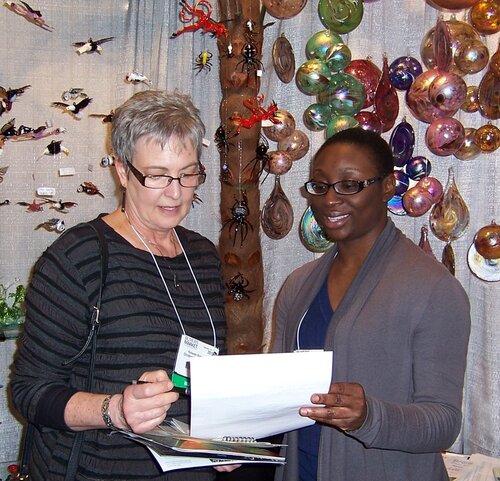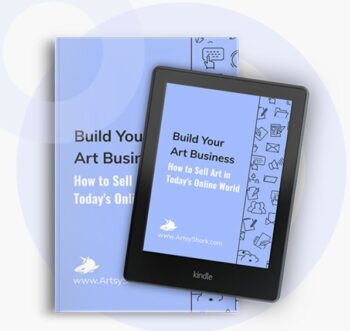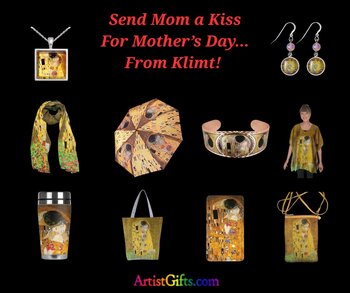by Carolyn Edlund
Have you considered selling your art or handmade work in the wholesale marketplace? Answer these questions to see if wholesaling is the right model.

Wholesale buyer writing an order with a glass artist at a trade show
Wholesaling is a business model that offers huge opportunities for creative entrepreneurs. It can help to expand sales of your product line exponentially, allowing you to scale up production and grow your business. You can pursue the wholesale marketplace as your sole means of doing business. Or, you can combine it with other streams of income.
Wholesaling is a time-honored way to sell. In fact, it’s simply “the way business is done” in most industries. If you enter a typical gift shop for example, 90% or more of what you see on the shelves was sold to the store outright. They purchase products at wholesale prices from suppliers. Then, prices are marked up to retail and displayed on the sales floor.
Many artists and craftspeople can take advantage of wholesaling. Reorders often result in long-term customer relationships, which makes the wholesale model a very stable one. But is it right for you? Answer the following questions to see if wholesaling could be a good fit for your art business.
Are you a fine artist who wants to sell original paintings, sculpture or other work?
If your art is a candidate for a traditional art gallery, then you most likely cannot wholesale. Art galleries operate on a consignment model, and do not typically buy originals outright from an artist.
However, if you have reproductions (prints) of your artwork made, you can potentially wholesale them. And, if you place your 2D designs on other products, such as clothing, jewelry, bags, greeting cards and other items which can be produced in volume, you may be able to sell them in the wholesale marketplace as well.
Are you willing and able to reproduce your designs and fill volume orders?
If you are prepared to design a collection, and make work in multiples to fill orders, wholesale could be a good fit. If you don’t like to make designs over and over again, you may want to opt out.
Please note, however, that artists who wholesale need to offer new products on a regular basis. That requires significant design time in the studio, and keeps your creativity flowing.
If you plan to have your designs produced by a third party rather than in your studio, repetitive production would not be part of your schedule. In that event, you would still have to commit to stocking inventory, shipping orders and handling the day-to-day activities of providing merchandise to retailers who sell your work in their stores. You would also factor outside production costs in your pricing.
Is all of your art or handmade work one-of-a-kind?
Although there are ways to wholesale one-of-a-kind pieces, they are not the mainstay of a production studio’s business. If what you make varies widely, using different mediums or styles, all of which are one-of-a-kind, then you would not realistically be able to wholesale your work.
However, there is wiggle room for differences within a collection that won’t affect your ability to sell wholesale. One example is selling scarves in similar but unique patterns and can fit into a size and color range within a particular collection. They could be wholesaled. Found object materials may vary within a collection of sculptures, but if they all fit within your brand’s look and concept, you may still be able to sell them at wholesale.
If you make goods using molds, templates, technology or efficiently by hand, you may be a good candidate to wholesale your products. Studio production should be organized, and your business should use systems and cost controls that help you build out a successful line that will be profitable.
Are you ready to learn more?
Are you a good candidate to wholesale your art or handmade products? If so, you must learn how the wholesale marketplace works, and how creative entrepreneurs can thrive in it. You can access our entire library of articles about wholesaling right here. It can open your mind to a whole new way of earning!


Speak Your Mind